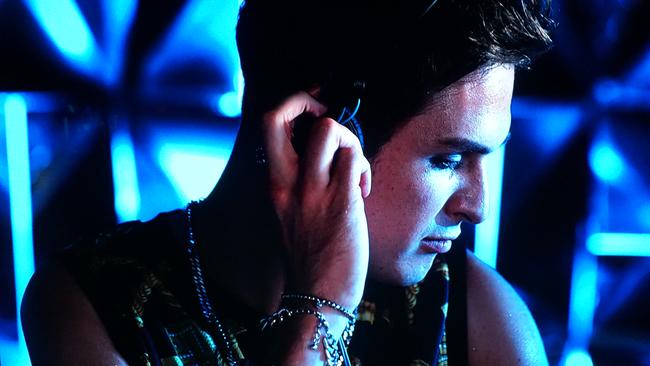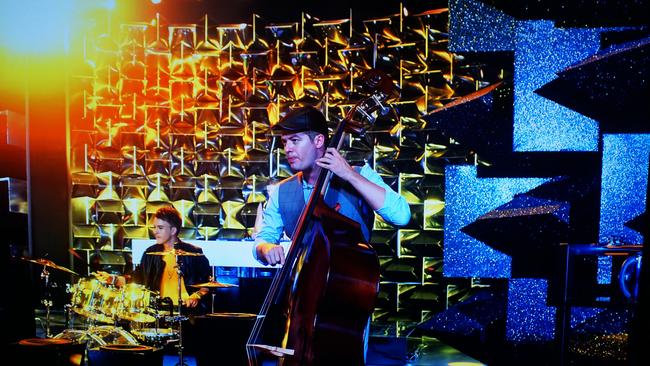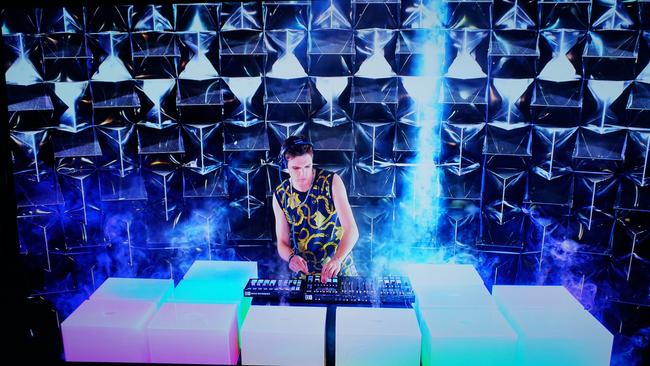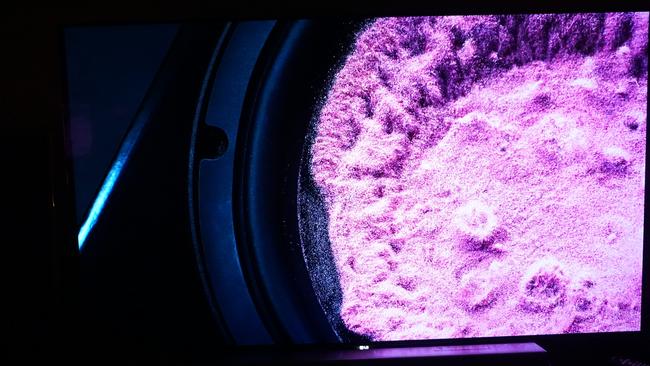LG’s HDR feature leaves other TVs in the shade
So how good is HDR on LG’s new flat screen OLED TV? And will people want it?

Trialling LG’s new flat screen OLED TV made me wonder how great directors and cinematographers would use a medium with shade reproduction as detailed as this.
I’m a fan of directors such as Alfred Hitchcock who use lighting and shadow to set moods and invoke incredible emotion in his films.
Take Psycho and those really dark house scenes where Norman Bates talks with his “mother” and the parlour scene with the unsuspecting Marion Crane. Amazing. But those interior house scenes look hopelessly dark when trying to watch Psycho on many lounge room TVs.

Getting far more detail in darker scenes is the major feature of LG’s EF950T, its first flat screen 4K OLED TV to sell in Australia. The feature is high dynamic range (HDR) and it’s been available in still photography for some time, even on cheapie smartphones.
A camera takes multiple images at different exposures to produce a still that captures detail in a bright sky as well as in darker shadows on the ground. In the past HDR didn’t work with moving subjects. But now HDR is possible with motion capture and video.
In January the UHD Alliance comprising the main TV manufacturers announced a standard for ”Ultra HD Premium” involving resolution, peak luminance, black levels and wide colour gamut. HDR is in the list and LG has brought it here.

The EF950T is certified at this standard. It has an OLED screen, where the crystals are their own light sources and there’s no general backlighting. LG points to OLED as its main differentiator from the competition with blacks being incredibly black and whites, even when next to blacks, incredibly white.
There’s wide colour gamut: a wider range of colours, a billion in all, says LG. And HDR’s ability to see great detail in darker scenes, a clarity between different shades of black if you like, completes a trilogy of new features.
So how good is HDR on a TV? And will people want it? The problem is, there is a growing chasm between the features manufacturers pump out and the public’s understanding of them.

Does the public understand Samsung’s SUHD vs. LG’s OLED vs. LED? Can it appreciate the difference a wide colour gamut makes and, if so, does it matter? As for high dynamic range, is it just one more technical complication?
Recently I was looking to buy a 4K smart TV and when push came to shove, more traditional concerns came to the fore. There was 4K, next there was how many HDMI and USB slots does it have, what’s the refresh rate, what’s the smart TV interface like, does it have the TV apps I need, and how good is the remote control?
Despite the lack of public awareness, the industry rates HDR as the next big thing in TV, bigger than 3D ever was. (Samsung reportedly is abandoning 3D altogether and Philips is winding it back. LG, which uses passive 3D, which I like better, is keeping it.)

What I actually saw during my time with the EF950T was a combination of these new screen technologies. The demonstration USB supplied by LG showed stunning white crystal chess pieces with a pitch black background and no bleeding in-between, contrasting charcoal colours of embers on a fire, details of dark floor areas inside a castle and a jazz concert with stunning images you’d swear were from a live performance, although they were snapped in front of a TV. I took photos of these scenes and they are available to view online.
There are caveats with HDR on TVs. There isn’t yet much 4K movie content around, let alone movie content that’s both 4K and HDR, although powerful forces are at work. Netflix for example says it will shoot new seasons of Orange Is the New Black, Marco Polo and Daredevil in HDR.
Newer movies such as San Andreas, The Martian and The Hunger Games: Mockingjay Part 2 have or are being upgraded to Dolby Vision HDR, as are some old movies. LG says you’ll watch them on the EF950T using ultra HD Blu Ray disks when they become available, and from a USB stick.

There’s a few other things to say about the LG EM950T. First, the 65-inch model I trialled has a thin and elegant design and looks imposing. The sound produced by the LG sound bar (sold separately) was crisp and clear.
This smart TV retains the LG webOS operating system which lets a user choose which TV apps show on the home screen. LG pioneered that. And the default apps include popular choices in Australia such as Netflix, Stan, ABC iView, Big Pond Movies and Quickflix.
But LG still doesn’t have many of the local apps Australians would want, such as catch-up TV apps for 7,9, and 10, and the popular Plex app for accessing home content, although there are two third party developed Plex apps: Playz Media ($5.32) and XPlay ($9.79).

Some network storage (NAS) suppliers such as Synology have a streaming app for Samsung TVs but not LG ones. LG needs to really work harder at offering some of these important apps.
LG has a good remote with an easy to point cursor. But pause/play with the remote isn’t just a single touch. To pause sometimes I had to press three times — once to bring up the player controls, then to display the cursor, and thirdly to select play/pause.
I also yearned for a simple input port interface that listed out all of the HDMI/USB/Component etc connections and didn’t try and predict what was there or not. It’s too clever by halves.

Voice commands spoken into the remote control were hit and miss. It understood when I wanted to load Netflix and BigPond Movies but interpreted iView as “live zoom” and Stan as “start interview”.
Those grumbles aside, vision displayed on the EF950T is stunning. I haven’t seen better. The images displayed here, taken with a camera in front of the set, hopefully convey something of what I am talking about. I certainly can see the enhanced detail in darker scenes, the promise of HDR.
The question is, what features will be on your mind the next time you buy a TV?
The EF950T flat OLED TV is available now. Recommended prices are $5499 (55-inch model) and $8999 (65-inch model).



